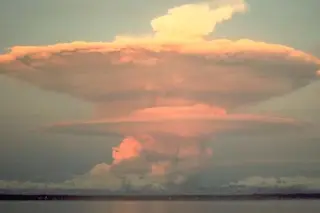Over the last few weeks, a number of disparate items converged in my mind. First, in my Petrology and Volcanology class here at Denison, we spent a week talking about what geologists know about triggers for volcanic eruptions. Secondly, I was asked some questions about Richard Branson's April Fools' joke regarding the supposed Virgin Volcanic that would send a manned submersible into a volcano. Put these two ideas together, and you get to wondering about that age-old question: Could we trigger a volcano to erupt on purpose? This has been the realm of science fiction and conspiracy theorists for decades (centuries?), the idea that humans could figure out a way to get a volcano that isn't erupting to start erupting. Mostly, this is in the hands of evil scientists/lunatics who are bent on world domination (paging Dr. Horrible) or some last ditch effort to save the planet (as in Crack ...
How to Trigger a Volcanic Eruption on Purpose
Could we trigger a volcano to erupt? Explore theories around explosive volcanic eruptions and lithostatic pressure release.
More on Discover
Stay Curious
SubscribeTo The Magazine
Save up to 40% off the cover price when you subscribe to Discover magazine.
Subscribe













